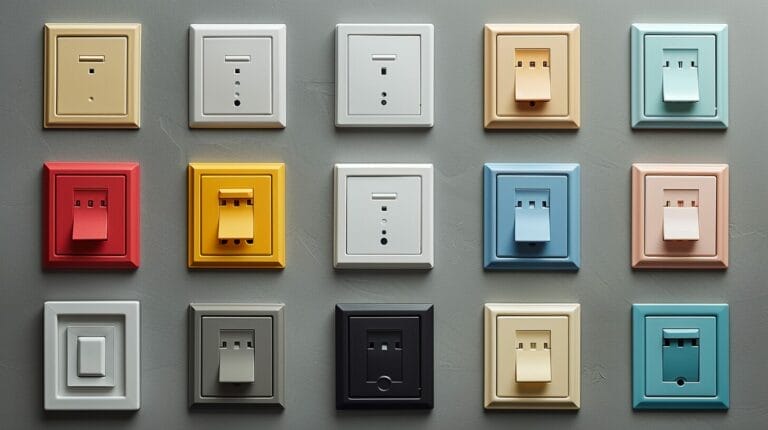What Are Driving Lights? Explained Simply
As we navigate roads, the role of driving lights becomes increasingly essential. These specialized lights offer more than just enhanced visibility; they can be a game-changer in challenging driving conditions.
But what are driving lights and what sets them apart from standard headlights? Let’s shed light on the simplicity behind driving lights and explore how they can elevate your driving experience to a whole new level.
Key Takeaways
- Driving lights enhance visibility and safety with intense beams.
- They are mounted on the front of vehicles for additional illumination.
- Different types include front-facing, amber, and custom driving lights.
- Useful for improved visibility in various weather conditions.
- Understanding legal regulations and choosing lights based on driving needs is crucial.
Understanding the Basics of Driving Lights

Driving lights distinguish themselves from regular headlights through their specific design and purpose. Unlike regular headlights, which provide a standard beam of light, driving lights offer a more focused and intense beam, improving visibility in fog, heavy rain, or off-road terrains.
Typically mounted on the vehicle’s front, either on the grille or the bumper, driving lights fill in the gaps left by the headlights. This additional illumination enhances the driver’s ability to see obstacles, pedestrians, or animals on the road ahead, ultimately improving reaction time and overall safety.
Identifying Different Types of Driving Lights

Different types of driving lights cater to various needs and conditions:
- Front-facing driving lights: Essential for illuminating the road ahead and improving visibility during challenging conditions.
- Amber driving lights: Offer a unique hue that enhances contrast, particularly useful in certain environments.
- Custom driving lights: Allow drivers to personalize their vehicles while benefiting from improved visibility.
Understanding these options helps drivers choose the best lights based on their specific needs and preferences, whether for enhancing visibility in adverse weather conditions or adding a stylish flair to the vehicle.
Practical Uses of Driving Lights for Enhanced Visibility

Driving lights are invaluable for enhancing visibility, particularly during nighttime and adverse weather conditions. They provide a more focused and intense beam of light compared to standard headlights, helping drivers see further ahead and identify potential hazards sooner.
| Practical Uses of Driving Lights | Benefits |
|---|---|
| Enhanced Visibility in Fog | Improved visibility in low-lying foggy conditions |
| Nighttime Driving | Better illumination for safer night driving |
| Adverse Weather Conditions | Increased visibility during rain and snow |
Fog lights, a type of driving light, are especially useful in fog or mist, cutting through the fog and reducing the risk of accidents.
Legal Considerations and Regulations for Driving Lights

Understanding the legal considerations and regulations is crucial when using driving lights:
- Fog lights vs. Brighter driving lights: Each serves a specific purpose and is regulated differently.
- Regional restrictions: Legal restrictions vary by region, necessitating familiarity with local laws.
- Impact on other drivers: Bright lights can cause glare, so it’s crucial to use them responsibly and ensure they are properly aimed.
When choosing driving lights, opting for quality products that meet legal standards can help avoid fines or penalties.
Guide to Choosing the Right Driving Lights for Your Vehicle

Selecting the right driving lights involves considering the purpose they’ll serve and the conditions you usually drive in:
- Fog Lights: Designed to cut through fog, rain, and mist.
- Additional Lights: Installing extra lights, like LED light bars, enhances visibility on dark roads.
- Front Grille Placement: Offers a centralized and focused beam of light, aiding in clear vision during night drives.
Conclusion
To summarize, driving lights are essential for enhancing visibility and safety while driving in challenging conditions. By providing a more focused and intense beam of light, they help improve reaction time and overall driving confidence.
Understanding the different types of driving lights, their practical uses, and legal considerations can help drivers choose the right option for their vehicle. Investing in quality driving lights is a wise choice for those looking to navigate roads with better visibility and peace of mind.
Frequently Asked Questions
What are driving lights?
Driving lights are additional lights installed on the front of a vehicle to provide extra visibility during driving. They are typically brighter than regular headlights.
What is the difference between driving lights and headlights?
The main difference is that driving lights are designed to help drivers see the road ahead more clearly at a distance, while headlights are mainly for making your vehicle more visible to others on the road.
How are driving lights different from fog lights?
Driving lights are typically used to illuminate a wider and longer range in front of the vehicle compared to fog lights, which are designed to penetrate fog, dust storms, and other hazardous conditions close to the ground.
Why are driving lights important?
Driving lights help drivers see the road better in low light conditions and make the vehicle more visible to other drivers, especially during the day. They can also be crucial in dangerous situations where visibility is reduced.
How do driving lights help drivers on the road?
Driving lights provide a wider and longer range of visibility, which helps drivers spot obstacles or hazards on the road sooner, improving overall safety.







